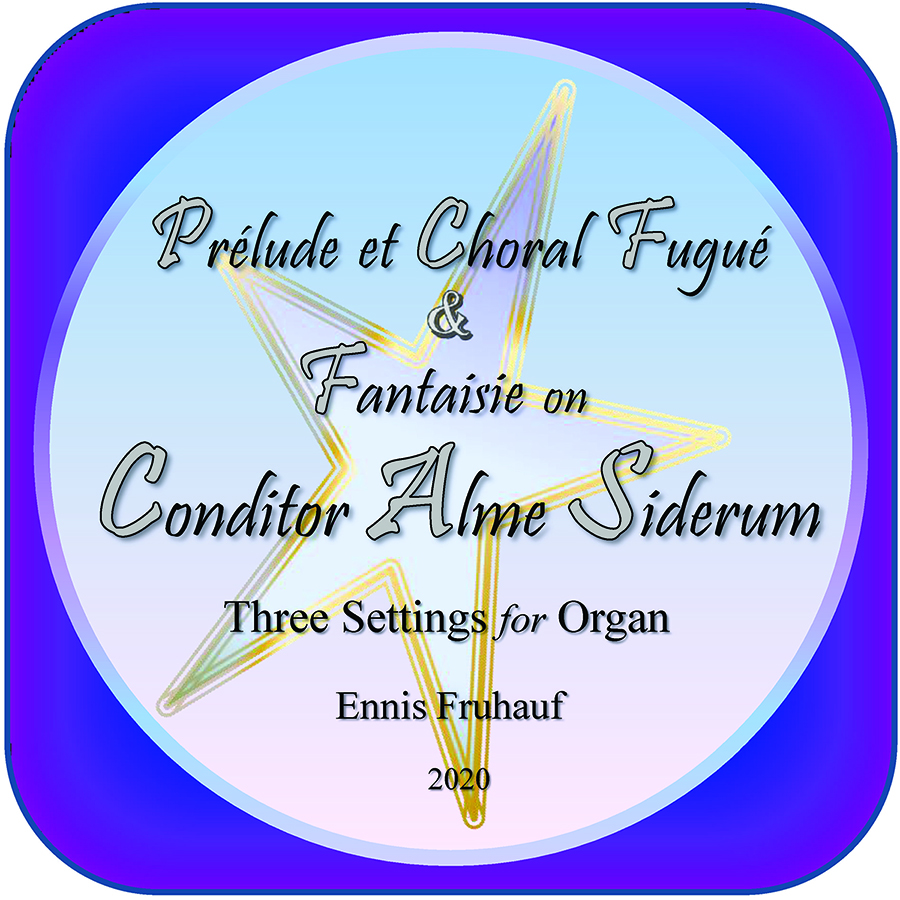
Prelude
et Choral fugue
&
Fantaisie
on the Gregorian Chant
Conditor Alme Siderum
for Organ
(6 & 5 pages of music respectively)
Notes
Prelude
et Choral Fugue sur le chant
gregorien,
Conditor alme siderum,
offers multiple treatments of an
anonymous 7th–Century plainchant melody originally paired with an Advent Vespers
text. In the course of
Pope Urban VIII's revisions of the Roman Breviary in 1632, many hymns were revised, and Conditor alme
siderum was no exception. The plainchant tune has undergone similar adaptations to accomodate an
ever changing tide of revisions, translations and tastes; the version cited in these
two settings is drawn from numerous 20th–Century sources.
The prelude
is a loosely imitative setting in
which the
four phrases
of the chant
are sounded in augmentation in the soprano over
points of imitation in lower voices. The
choral opens each
successive exposition of the four chant phrases with a declamatory statement of
the tune that appears in its original time values in the left hand, accompanied in the right hand by bold
chords moving in parallel motion stating the melody in augmentation, all over a
sustained tonic pedalpoint. Each of the four declamations is cadenced by points
of imitation between voices, followed in turn by a contrastingly light and
dancing three-voice fugato treatment of consecutive phrases of chant. A
brief and dramatic coda returns to the declamatory opening textures of the
Choral, ringing
out with boldly imitative ‘Amens.’
Fantaisie on Conditor Alme Siderum offers a rhapsodic treatment of the traditional Mode IV plainsong associated with the text from which the tune takes its title. Each of the four phrases of chant are introduced by brief unison statements, then followed by running eighth note passagework in the left hand, harmonized in the right hand and sounding above a slow moving pedal cantus firmus presentation of the plainchant in augmented note values. For the second phrase, the left hand divides into two freely imitative voices. Following a brief episode, the third phrase introduces a sighing motif in the two voices played by the left hand, followed by another episodic extension. The fourth phrase returns to the thinner textures of the opening statement: the left hand is reduced to a single line, only to divide once more into two voices at the arrival of a series of dramatic harmonic progressions over a concluding pedalpoint. In contrast with the conservatively Ionian tonality of the plainsong's mode, the Fantaisie displays venturesome modulatory explorations of near and distant keys, starting out in a tonic of D major, then presenting a complete pedal statement of the chant in A major. A final cadence on a C-sharp major chord adds a closing eclat to an already rich tonal palette.
Click on the image below to download
a letter-sized PDF booklet
(Covers, 2 pages of Notes, and 10 pages of music)
